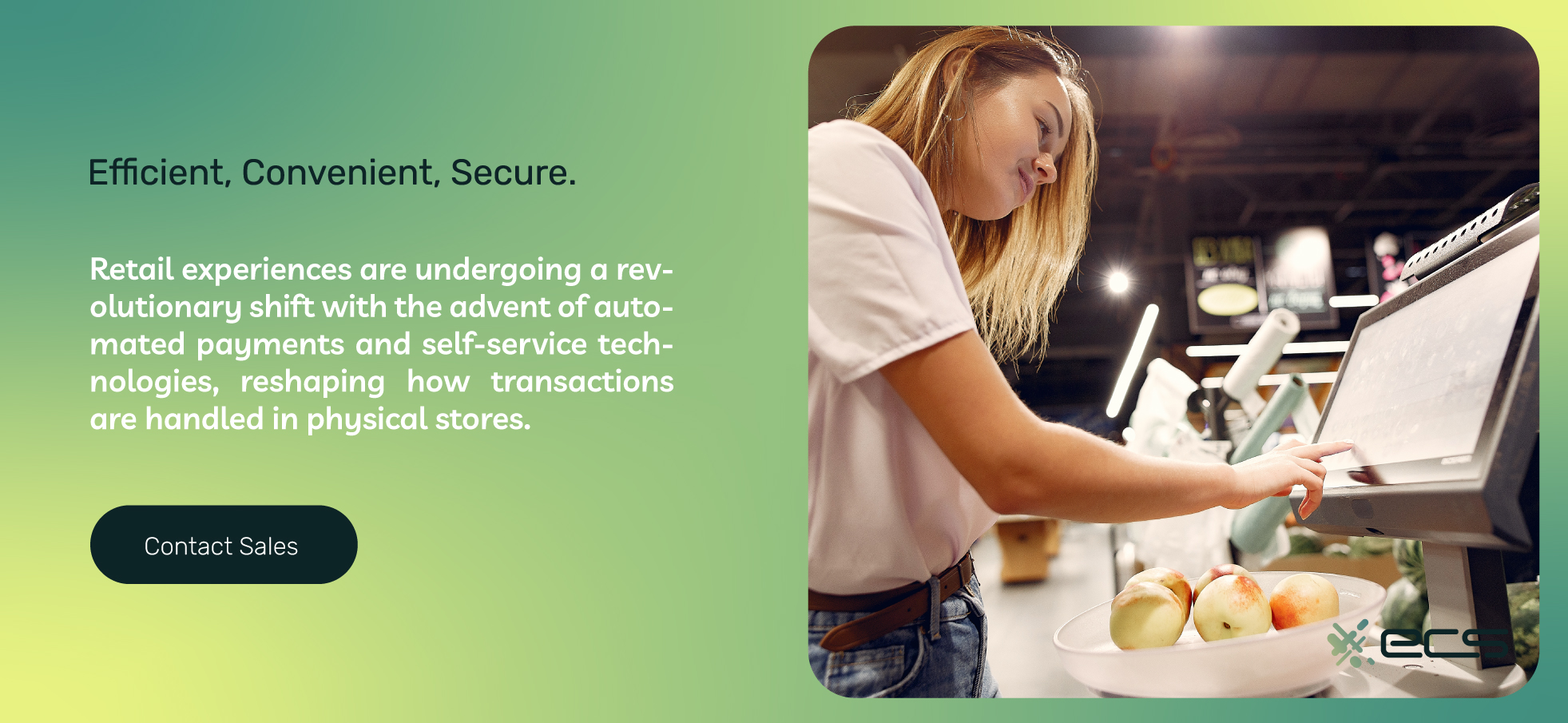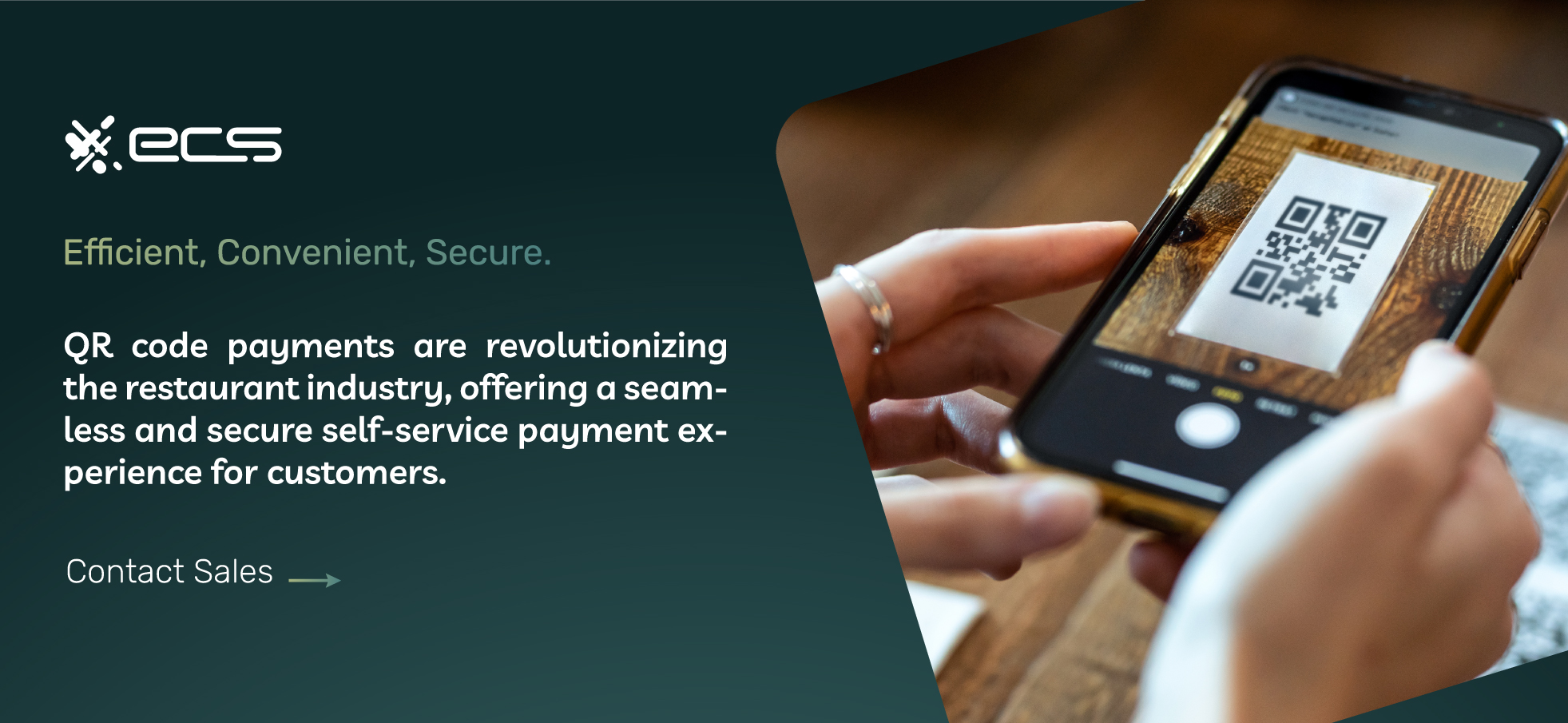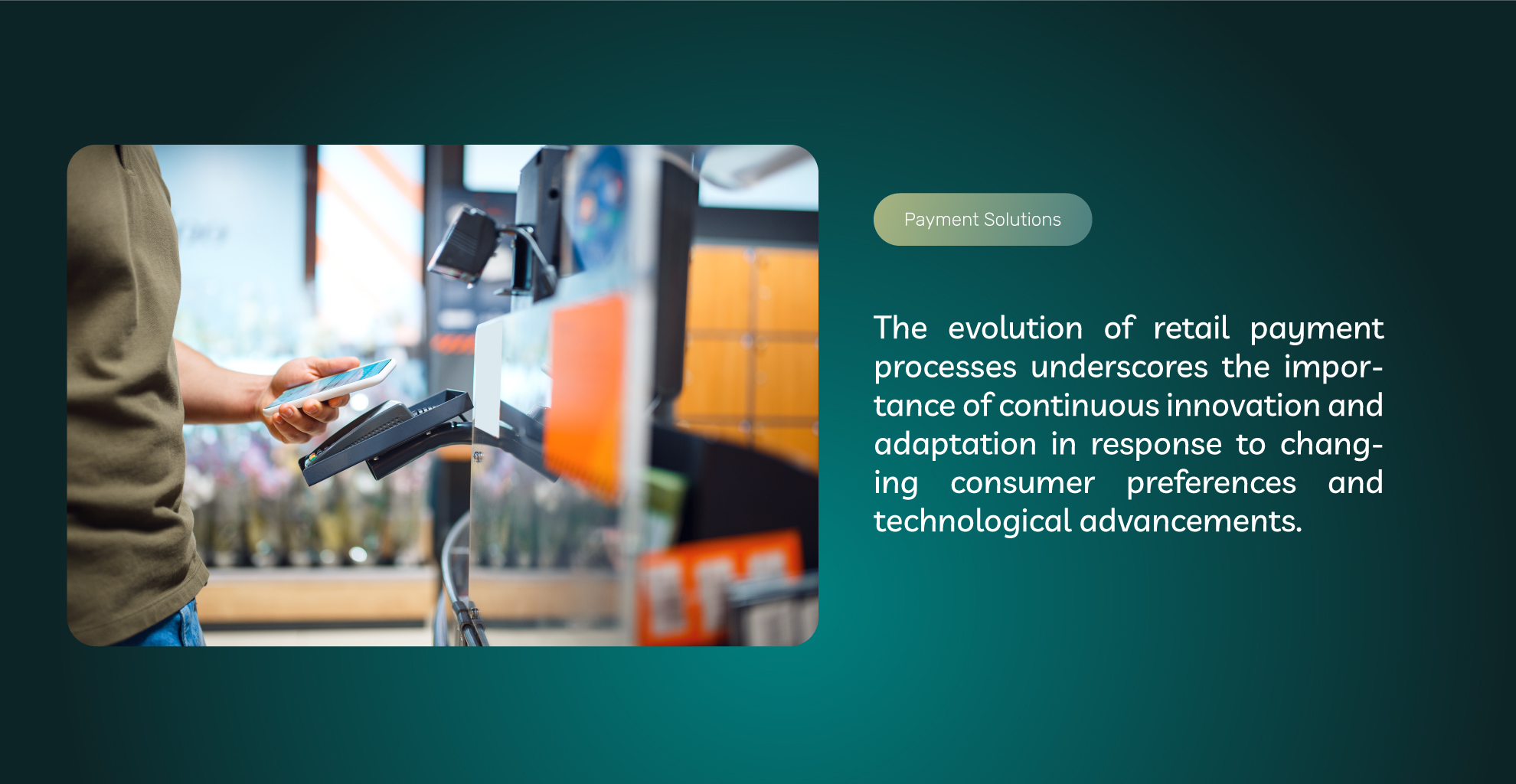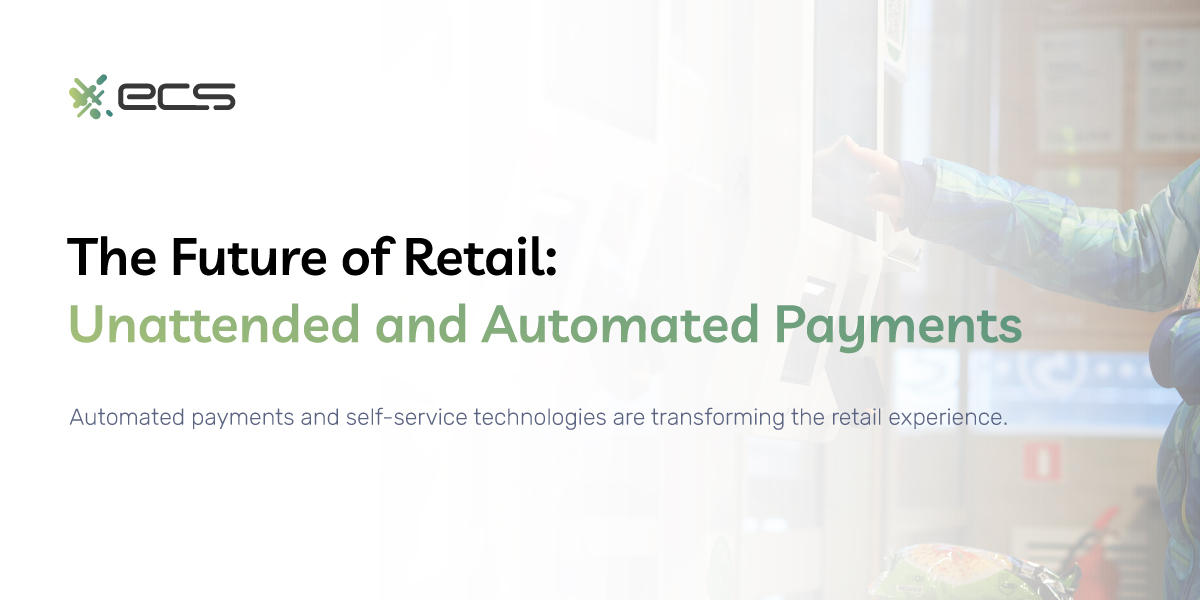Automated payments and self-service technologies are transforming the retail experience, particularly retail payments. Let’s examine in-store retail settings to see how automation and self-service are changing the industry.
Paper or Plastic? The History of Checkout Stands
The idea of getting everything you need in one place is taken for granted by most American consumers. But once upon a time, there was no such thing as Walmart, Costco, or Kroger. You got milk and eggs from the farmer, bread from the baker, meat from the butcher, and clothing from a clothier.
The idea of purchasing different items from specialty purveyors continued to permeate the American landscape well into the 20th century, with notions of household terminology like the “milkman” or “the corner store.”
However, in 1916, the face of consumer retail would change forever when a Memphis businessman opened Piggly Wiggly. It was the world’s first self-service grocery store. It introduced many concepts we now take for granted, like aisles, shopping carts, individually priced items, and checkout stands.
Prior to this, if you went to a “dry goods store” or “general store,” the man behind the counter would take your order verbally and fill it out by selecting items from behind the counter and bagging them. Nothing was priced—you wouldn’t touch the items until you paid. There were no aisles, no shopping carts, and no checkout stands. Just the counter and the till.

The Very First Clunky, Awkward, Self-Checkout Stand
The very first self-checkout stand was actually not a recent innovation. It was placed in an Atlanta Kroger in 1986. The machines, developed by (fittingly named) CheckRobot of Florida, took three years to build and $5 million. It was a massive, huge box with a conveyor belt, sort of like a baggage carousel at the airport.
Lasers were used to scan the item and match it against items in the database. It was a long, arduous process. One that probably frustrated customers, and the lasers were unaccompanied by the sound of Pink Floyd. Competitors (including today’s market leader NCR) developed machines that assessed the item’s weight and matched it against database information.
Either way, it was a terribly inefficient process compared to today’s machines or even just the process of a human cashier handling a transaction. While novel, it was probably less efficient than intended and didn’t take off.
Self Checkout By The Numbers
As of 2013, there were 191,000 self-checkout stands around the world. That number sounds large when talking about one person’s annual income. But, it’s incredibly small when talking about the global market.
It’s predicted that by the end of 2025, there will be 1.2 million self-checkout units worldwide, which is a drastic 5x increase. Moreover, the U.S. market represents about 41% of this number. That’s (roughly) 500,000 self-checkout registers around America, a country with approximately 62,300 grocery stores.
While grocers are not the only type of retailer to use self-checkout stands, this helps illustrate a point that most consumers can see from shopping themselves: many stores have essentially replaced half of their traditional human-manned registers with self-checkout.
Should Small Business Owners Use Self-Checkout Stands?
There are approximately 1 million retail establishments in the United States, and many of them are small businesses. One can see why large corporations would be interested in slashing payroll hours and speeding up in-store efficiency. But should small businesses do the same?
Standard kiosks can range from $1,500 to $5,000, but more advanced units can easily hit $10,000. The cost of obtaining a self-checkout stand may not be prohibitive. But is it really necessary? And does it really benefit the business? One of the prime reasons for implementing self-checkout kiosks is to reduce wait times.
For many small businesses, that won’t really make a difference. Small businesses typically get much less foot traffic than big box retailers or grocery stores. Many consumers also like to shop at small businesses for the experience. There is something they appreciate about interacting with a live human being, especially one who owns the business and is interested in the goods or services being sold there.
The perception of a small business as a “main street business” might be eliminated by the presence of a soulless, faceless machine. The novelty of someone serving and assisting you in picking out the perfect gift, shirt, or book is gone. It’s a lonely world out there when you have to scan everything yourself and then pay $0.10 for a bag on top of it (only in some locations), especially on your birthday.
The Lonely World of Do-It-Yourself Checkouts
There is a very interesting divergence in consumer appreciation for self-checkout between generations. 73% of polled consumers prefer self-checkout, which increases to 85% among GenZ consumers (those aged 12 to 27).
Gen Z also spends the most time on social media, with 35% spending more than two hours each day. Gen Z is also the loneliest generation, with more than 73% of Gen Zers reporting feelings of loneliness, more than any other demographic.
Could there be some thread connecting these statistics? Could it be that a generation immersed in phone usage and sentiments of isolation prefers to skip the small talk at the register and just scan everything themselves?
Perhaps. If nothing else, let’s use these connections to suggest that there is something social about a human-operated register. And since human interaction is really at the heart of small business transactions, small business owners might want to think carefully before implementing self-checkout.
Self Checkout And Automated Payments in Restaurants
However, there is one business where self-checkout is increasingly seeming like an excellent idea, or rather, an idea par excellence: the food business (restaurants). In traditional restaurant payments, a customer hands over a credit or debit card, and the waiter takes it to the back for a few minutes, processing the payment at a terminal.
The card is out of the customer’s sight for a few moments. Moreover, restaurants are busy places. There is typically not much of a “vetting” process or background check on servers, especially in family-owned establishments. This combination of factors (and others) can lead to some problems.
A distracted waiter can forget to lock the payment terminal, allowing another unscrupulous waiter to come along and fiddle around. They could leave the card on the counter while they suddenly rush to help run out an order or break apart an epic, plate-hurling fight in the kitchen (it’s a high-stress business, what can we say).
And sometimes, waiters take it upon themselves to commit credit card fraud, such as the ones in a New York City steakhouse that used stolen Amex numbers to buy luxury goods. Occasionally, credit card theft in restaurants can be part of a complicated, layered crime ring that facilitates other crimes like identity theft or the sale of customer information.


QR Codes Changing The Automated Payment Game
For a while, there wasn’t much of a way around this problem. Having customers pay at the counter on their way out is one option, but it deflates the atmosphere of service and excellence (may I take your card, sir?). But now, QR code payments are changing the game.
Here’s how it works: the diner is presented with a check containing a QR code. The QR code is a checkerboard pattern they can scan with their mobile phone. They are then directed to a payment link on a webpage, where they can settle the tab and add a tip before inputting the card number on their mobile device.
This type of self-service payment can eliminate (or at least severely curtail) restaurant credit card theft and fraud because wait staff will never handle customer credit cards. But it has additional benefits beyond payment security: taking a check from the customer, taking it into the back, running the tab, and then returning the card all take time. Waiting on multiple tables at once can take several minutes.
Some diners even continue to linger after paying for the check. Even if they don’t, the more time it takes to wait for a table from start to finish, the more backed up “the floor” will get. Automating payments with some customer self-service mobile payment solutions can significantly help “turntables” much faster and reduce wait times for incoming diners.
A New Wave of Vending Machines And Automated Payments
Vending machines are another self-service context when it comes to payments. In fact, vending machines were probably the first form of unattended retail. They’ve existed in some form or another longer than you think: English taverns had machines that dispensed cigarettes. This primitive retail automation became much more popular during the 20th century when machines started offering candy, juice, soda, and snack foods.
Today, we would hardly consider vending machines a retail innovation. However, the retail market is once again seeing an interesting resurgence of automated, unmanned products and services. Consider startup Let’s Pizza, which makes vending machines that bake you a fresh pizza, allowing you to even choose the toppings.
Then there’s KeyMe, which allows customers to make a copy of a key. Amazon has also developed Instant Pickup Points, which sell snack foods and toiletries. They essentially function as small-sized convenience stores, facilitating a late-night pickup of Pop-Tarts or Pepto Bismol.
Since Amazon is piloting its vending machine “stores” on college campuses and only making them available to individuals who have Prime, some pundits have criticized the project as a thinly veiled attempt to lure younger consumers into a lifetime relationship with Amazon.
Whatever it may be, these smart vending machines are one of the more interesting retail tech trends out there. Aside from Amazon, they are creating an entire market of entrepreneurs going beyond soda and Pringles. Self-checkout systems are obviously at the heart of these experiences, just like they were in 1650 when a gentleman needed ye olde cigarettes.
COVID-19 and The Launch of Curbside Pickup
Some interesting consumer behavior trends emerged during COVID-19, including the contactless checkout process of curbside pickup. Consumers would order an item online, drive to the store, and have an employee or waiter bring out their products or food.
One might expect that after the Pandemic ended, consumers would drop curbside pickup and resume shopping in person. However, one study found curbside pickup increased 66% between 20233 and 2023. It seems that once consumers got a taste of this particular iteration of frictionless shopping, they didn’t want to go back.
But things may get even more interesting in the years ahead, with omnichannel retailing in the “metaverse.” Today’s BOPIS (buy online pay in store) model involves purchasing an item online on your mobile phone or computer and then driving to the store to pick it up.
Virtual Reality Checkout?
Metaverses are virtual reality zones where people can play games, explore new “worlds,” build communities, and even invest in “real estate.” They’re not just for entertainment, either: Businesses have used the “metaverse” to host conferences and trade shows. As you can imagine, much of the metaverse’s participation hinges on hardware like VR goggles.
Imagine the following scenario, if you will: a metaverse user is walking about their particular metaverse. They realize they need toilet paper, tin foil, and plastic bags. They walk into a virtual “Walmart” to pick these items up, making a payment at a “cashless kiosk” with a digital wallet. Once the item is paid for, Walmart ships it, a personal shopper (via something like Instacart) brings it to them, or they can unplug it and drive to Walmart for curbside pickup.
This kind of virtual shopping experience seems bizarre. But this type of e-commerce integration with reality has already been used by Pizza Hut, which allowed gamers in the world of Everquest to initiate a pizza order by typing in “/pizza.” As you can now predict, digital wallet adoption into the metaverse will likely become a more common theme as metaverses become more normalized and frequented among consumers.
Amazon’s Checkout Free Stores Utilizing Biometric Payments
No, this isn’t a store where everything is free. Rather, Amazon stores like Amazon Go and (some) Amazon Fresh locations are pioneering a “just walk out shopping” digital payment system. There is no checkout kiosk at all to speak of. Technology identifies customers as they enter the store either with a facial scan or by scanning a QR code.
Shoppers can browse the store for items they like. Cameras and weight sensors track their purchases, creating virtual carts in their Amazon accounts. When shoppers leave the store, they are charged for the items they took with them via automated payment.
This shopping modality is the culmination of IoT (the Internet of Things) in retail. That means an entire network of various devices (weight sensors, cameras, etc.) is working together to monitor customer behavior and automate payments as customers walk out of the store.
But is it the culmination of a good shopping experience? At one point, Amazon considered opening 3,000 such stores across the US. But in 2023, they shuttered eight stores, reducing their brick-and-mortar retail portfolio to just 20 locations. What happened? Isn’t automated, self-service payment processing supposed to reduce expenses?
Why Amazon is Pulling Back
Amazon may have bitten off more than it could chew by venturing into the grocery store business. While it’s true they purchased Whole Foods, the company taking your entire paycheck for artisan bread and organic produce was already an established brand. Customers know what to expect when they walk into Whole Foods, and Whole Foods knows how to retain customer support.
Since Amazon branched out into the curbside retail business, the world has been rocked by the COVID-19 pandemic and its fallout, rising gas prices, rampant inflation, and supply chain disruptions. Unlike established chains such as Kroger or Safeway, Amazon is a newcomer to the grocery space and may not have known how to respond to some of these challenges.
But wait…there’s more. While the “just walk out” paradigm was innovative, the complex network of cameras and sensors is also expensive to set up and maintain. Furthermore, customers putting items in the wrong place (I don’t want these Cheerios, after all) could confuse the system and create an expensive mess to clean up.

Grocery Benefits From Customer Loyalty
These hiccups in the operations are reminiscent of the first self-checkout machine from 1986, which we mentioned in the intro of our survey. And hiccups in business can make it hard to match what customers expect. With so many choices out there, there isn’t much reason for customers to stick with Amazon Fresh if the experience is not as smooth as it should be.
The grocery space, in particular, is also subject to strong trends in consumer preferences and loyalty. Customers tend to stick with their favorite grocers, and new technology is often not compelling enough to get them to switch loyalty.
The fact that you don’t have to check out at Amazon Fresh is not a compelling enough reason to motivate consumers to shop there instead of Kroger, Safeway, Ralphs, or brands where they already shop for food.
Ultimately, it would seem that the latest automated payment technology is insufficient. However, Amazon is not one to give up and will likely continue to fine-tune its approach until it hits the right formula, combining innovation with customer preference.
What is Best for Your Customers?
The (not entirely total) failure of Amazon’s automated shopping experience leads us to consider a customer-based approach. What do consumers think about self-service card readers or innovative, cashierless technology? After all, many consumers are accustomed to inputting payment information when they shop online.
However, shopping in person does not strike them as equivalent to shopping through an online retailer with a payment gateway. Surprisingly, only 14% of American consumers use cashierless checkout regularly. 75% of them (three out of every four consumers) do not use it regularly and may have not even heard of it.
As with anything else, demographics change the percentages. 21% of consumers 18-34 use it regularly, while 16% have not and aren’t interested. 16% of consumers 35-54 use it regularly, while 23% do not and aren’t interested. And among consumers aged 55-65, only 6% use it regularly, while 33% do not and aren’t interested.
As you can see, as consumers age, they are much less likely to use self-checkout, and far more likely to not want to. These findings invite us to consider that newer is not always better. Businesses should consider their customer base before fully or even partially embracing innovative payment technology.
What Do YOU Think about This Trend?
It’s just one of the many things that need to be considered, like marketing, store design, loyalty programs, and (these days) embracing (or avoiding) certain social issues. Self-checkout stands might make some shoppers think, ” Phew…no more awkward small talk and faster lines.” Others might take one look at the cashier-less kiosk and feel negative associations such as “the business is trying to save money” or even feelings of abandonment.
A similar sentiment is experienced when customers are trapped in automated customer service on the telephone, wondering how they can speak to a real, live customer support agent. Large corporations like Walmart might not care about customers at the edge of a bell curve. They can afford to speed up in-store operations and cut costs if automated; self-service registers really do that…just like they can afford to send customer support overseas or rely on chatbots.
But this isn’t something that will work for smaller businesses, whose customers are indeed at the edge of the bell curve. In these cases, unattended payment systems may not really be all that necessary. They may even change the way customers use the business.
Some studies have shown that self-checkout may not save a business money, contrary to popular intuition. It really depends on the business—their payroll, the quality of the register, the type of business, and other factors.
To explore if self-checkout tech is good for your business, let’s talk. Even if it’s not, it may be time to upgrade your current POS hardware. Let’s connect: fill out our contact form or give us a call.
Frequently Asked Questions About Unattended and Automated Payments
Yes, self-checkout registers are gradually replacing traditional employee-operated registers. Though it is threatening jobs, it is helping businesses to reduce payroll costs and speed up checkout efficiency.
Self-checkout is not necessarily beneficial for small businesses. First, they need to consider the cost of obtaining a self-checkout stand. Additionally, they must consider the specific customer preferences of small business experiences. Small businesses typically offer a more personalized customer experience with face-to-face interactions and, therefore, might not benefit from implementing self-checkout and automated payment technology.
Gen Z consumers tend to prefer self-checkout over their older generations. They spend a significant amount of time on social media, and self-checkout offers familiarity with self-service technologies and a preference for avoiding small talk at the register, something they are less accustomed to with today’s majority of communication being through text.
QR code payments allow diners to scan a QR code on their check, which directs them to a payment link where they can settle the tab with an automated payment requiring no wait staff involvement. This type of self-service payment eliminates the need for wait staff to handle customer credit cards and reduces the risk of credit card theft and fraud.
